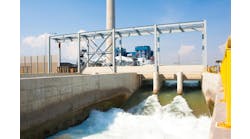Irrespective of how steam is produced in our process plants, several aspects of steam generation are common; we should apply standard best practices to them. This column specifically addresses the blowdown stream as well as both the flash steam recovery and heat recovery that we should implement in our steam systems.
[pullquote]
Every steam system has a water treatment plant; feedwater is made up of treated makeup water, returned condensate and directly injected steam (in the deaerator). Although condensate and steam are clean, the treated makeup water still brings in dissolved impurities. Because these impurities are not soluble in steam, they remain in the boiler. As a result, their concentration builds and can lead to serious operational problems such as scaling on the water-side of the tubes resulting in tube leaks and failures, foaming resulting in liquid carryover, loose sludge in the boiler water, etc. All of these problems could damage boiler integrity. Blowdown is the primary mechanism that controls the water chemistry of the boiler water. It regulates the concentration of dissolved and precipitated chemicals in the boiler and ensures steam generation equipment functions reliably.
[callToAction]
Generally, boiler water conductivity or total dissolved solids is used to control blowdown, but as our steam systems get more complex, other parameters — pH, silica, iron, etc. — also are used as secondary control points. In the past 25 years, I have seen blowdown rates as low as 1% and in some instances as high as 15%. Blowdown rate depends on several factors; however, I will not be covering blowdown rate in this column. Please work with your water chemist to ensure you have everything in place to minimize blowdown.
Blowdown, because it is saturated liquid water at steam generation pressure, contains a significant amount of thermal energy. The higher the steam generation pressure, the higher the saturation (blowdown) temperature and the higher the thermal energy (Btu/lb) associated with the blowdown. As blowdown is discharged from the boiler, this thermal energy (provided by the fuel or from another source) is lost. Therefore, reducing the amount of blowdown to the bare minimum is an excellent best practice; beyond that we need to look at other mechanisms to capture lost energy.
So, that brings us to creating and recovering flash steam from blowdown and then, if economically justifiable, recovering heat from the liquid water before discharge. The simplest configuration is to first take the blowdown stream into a flash tank whose pressure is slightly higher than either the deaerator pressure or the lowest-pressure steam header in the steam generation area. The blowdown flashes and produces low-pressure steam that can be recovered and used within the steam system to offset deaerator steam demand. Recovering flash steam accounts for 65–70% of the total blowdown stream energy that would otherwise have been lost. Interestingly, the flash tank is a simple piece of equipment with no moving parts. On several occasions, I have been able to source it from within a plant’s operations that are no longer in service. The remainder of the liquid water from the flash tank is still hot (>225°F) and can be used to exchange heat in a simple one-pass shell-and-tube heat exchanger or a plate-and-frame unit, etc. This can be used to heat the makeup water going to the deaerator, thereby saving on overall steam demand from utilities.
Also, I have faced some challenges in plants when I tried implementing blowdown thermal energy recovery. Most relate to past incorrect applications, such as a large U-tube heat exchanger used to recover heat from blowdown that fouled and eventually was taken out of service because it became a maintenance headache. In other plants, because there is so much excess low-pressure steam, managers claim there’s no benefit of low-pressure, low-temperature heat recovery. This is not necessarily true; technologies exist to upgrade low-pressure steam and make use of every Btu that would otherwise be lost. I realize the overall blowdown energy recovery and cost savings may not be huge (<2%) but, as one of the simplest and most cost-effective best practices, it should never be ignored!


